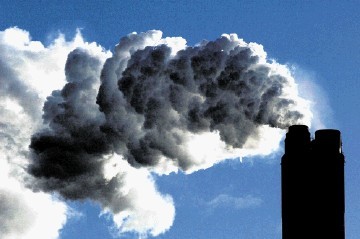
The Government has published long-awaited plans to cut illegal pollution but critics have warned they are too weak to improve the UK’s dirty air.
The plans suggest measures ranging from a “targeted” scrappage scheme to take the most-polluting vehicles off the road and retrofitting local bus and lorry fleets, to removing road humps to improve traffic flow, and encouraging more electric cars.
Air pollution is linked to an estimated 40,000 early deaths a year and 37 out of 43 areas across the UK are exceeding legal European Union limits for key pollutant nitrogen dioxide, much of which comes from diesel engines.
Documents published by the Government show the most effective way to cut illegal levels of nitrogen dioxide is to introduce charges on the dirtiest vehicles in pollution hot-spots in towns and cities.
While local authorities can introduce charging zones, as London is planning to do, the Government is warning town halls they should only bring in charges as a last resort.
Ministers were ordered to draw up the new clean air plans following a court challenge by environmental lawyers ClientEarth, with the High Court ruling that existing government proposals to meet EU-mandated pollution limits were not sufficient.
The Environment Department (Defra) lost a last-minute High Court bid to delay revealing the draft plans to reduce illegal levels of nitrogen dioxide until after the General Election.
Campaigners and opposition politicians have warned the new plans are woefully inadequate.
They accused the Government of failing to commit to a diesel scrappage scheme and of shifting responsibility onto local authorities to clean up the problem – while not providing them with funding.
With the political parties now campaigning for the General Election, the Tories said they were opposed to Labour’s approach of “hitting motorists in the pocket” by imposing charging zones and increasing parking charges.
Environment Secretary Andrea Leadsom said: “Improving air quality is a key priority as we support businesses in building a stronger and cleaner economy.
“Our plan today sets out how we will do just that – including presenting options for targeted diesel scrappage schemes.”
The documents suggest a scheme paying motorists to trade in their old cars and vans could see 9,000 of the most-polluting diesel vehicles and 6,000 old petrol vehicles scrapped and replaced by electric models.
Alternatively, it could be targeted at vehicles from a specific sector, particular areas or individuals.
Caroline Lucas, co-leader of the Green Party, said: “The Government is standing idly by while Britain chokes.
“This feeble plan won’t go anywhere near far enough in tackling this public health emergency.”
Greenpeace UK’s Doug Parr said: “A plan to help drivers swap polluting diesel for electric cars would be a good idea but the Government’s proposal lacks scale and detail.
“What’s worse, the Government is not just passing the buck to local authorities, it’s also tying one hand behind their backs by making it hard to phase out polluting cars and giving no new funds for delivery.”
As the plans were unveiled, Prime Minister Theresa May sought to lay blame for air pollution problems at the previous Labour government’s door, for encouraging people to buy diesel cars to cut greenhouse gas emissions.
Mrs May said: “What we want to ensure is that we are getting the balance right here between delivering the air quality improvement that we need, but recognising that there are a lot of people who went out and bought diesel cars because the last Labour government said that was the thing to do.
“They acknowledged that that was the wrong advice and we now see that it was the wrong advice, so want to ensure that we are getting the right balance – and so that this is a system that delivers better air quality, but it is not punitive on ordinary working families and drivers.”
